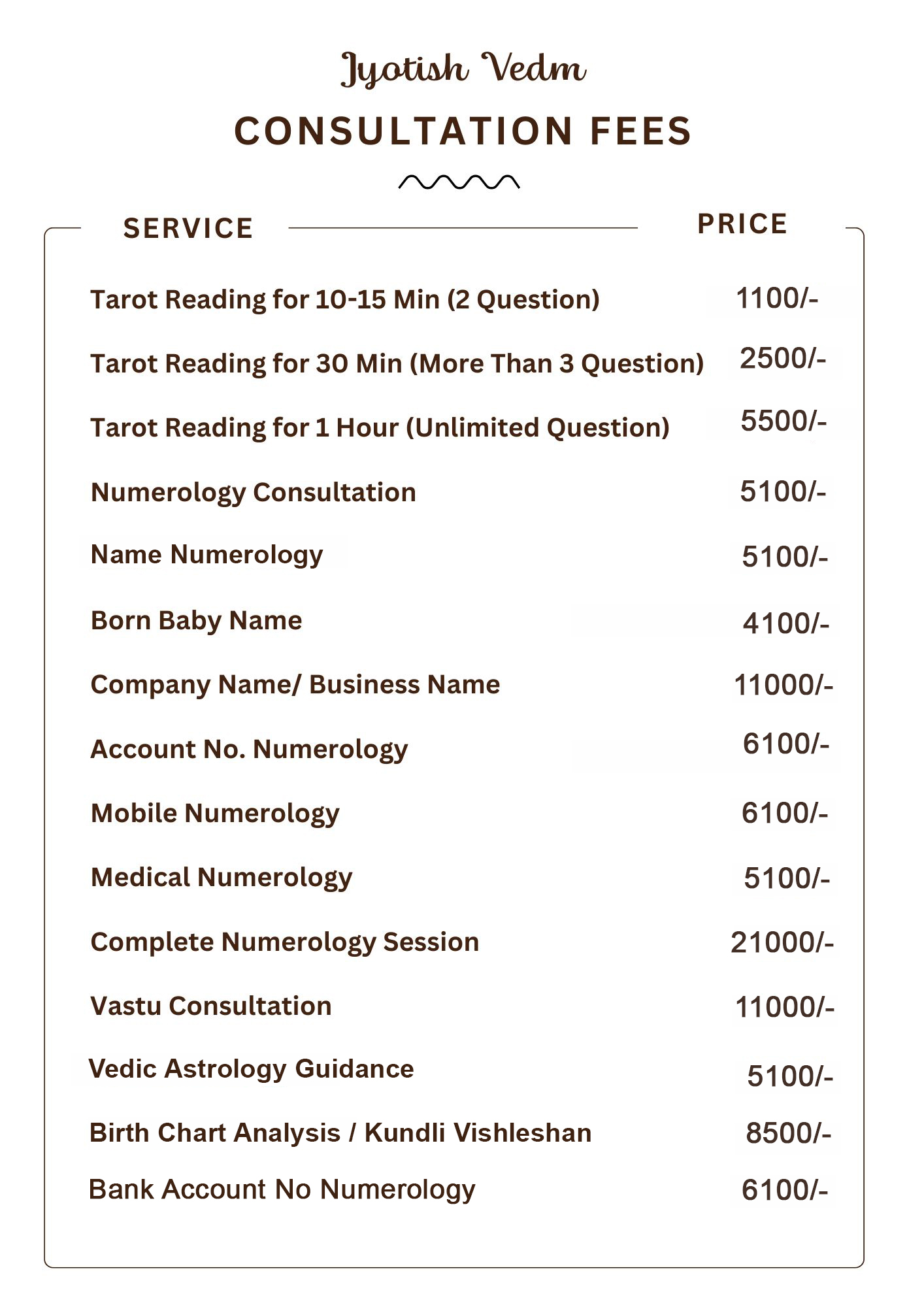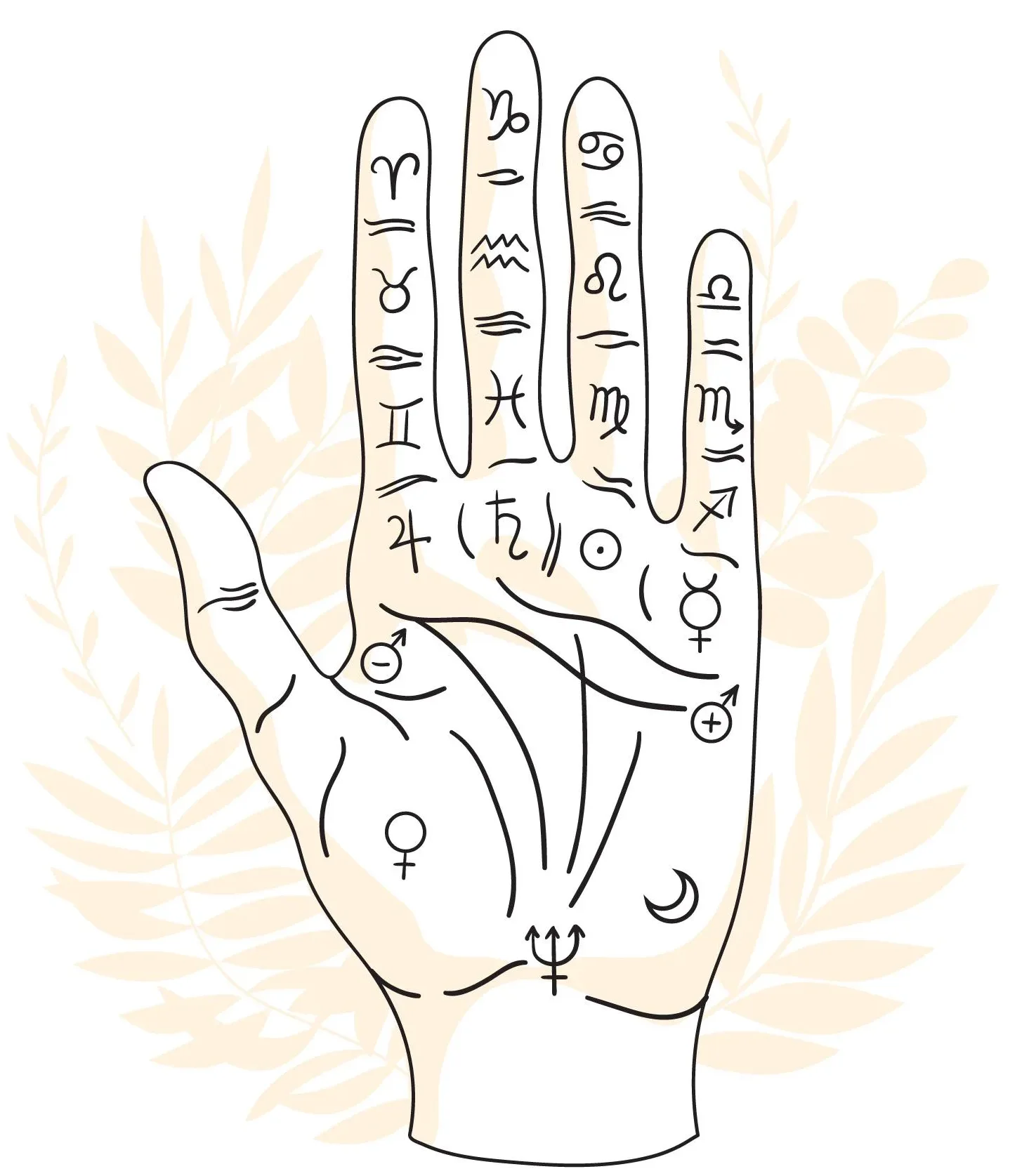
Course Syllabus Contains following MODULES
1. Tarot Card Reading Course Outline
-
Introduction to Tarot
- Understanding the history and evolution of tarot.
- Overview of the Rider-Waite deck and its significance in tarot reading.
- The purpose of tarot in self-discovery and guidance.
-
Connecting with the Cards
- Techniques for building a personal connection with each card.
- Developing intuition and empathy as a reader.
- Mindfulness practices for grounding before readings.
-
Structure of the Tarot: Major Arcana
- Deep dive into the 22 Major Arcana cards and their meanings.
- Understanding the journey of the Fool and its symbolism.
- How Major Arcana cards represent life’s key archetypes and themes.
-
Elements and Mutual Relations Between Cards
- Overview of the elements (fire, water, air, earth) in tarot.
- How elements influence each card’s meaning and their relational dynamics.
- Reading elemental interactions to deepen interpretation.
-
Finding Time Periods with Tarot
- Various methods for predicting time through tarot (e.g., suits, numerology).
- Using astrological associations to approximate timing.
- Practical tips for refining accuracy with time predictions.
-
Exploring Tarot Spreads
- A look at popular spreads and their applications (Three-card, Celtic Cross, etc.).
- Designing custom spreads for specific questions or clients.
- How to intuitively select and adapt spreads during a reading.
-
Remedies of All 78 Rider-Waite Cards
- Holistic remedies for each card, including crystals, herbs, and affirmations.
- Using tarot as a tool for healing and personal growth.
- Assigning actionable remedies for clients based on readings.
-
Chakras and Tarot
- Chakra associations with tarot cards, especially in the Major Arcana.
- How to identify and address blocked chakras through card readings.
- Practical exercises for aligning chakras using tarot.
-
The Art of Storytelling in Tarot
- Techniques for weaving card meanings into a cohesive narrative.
- How to guide clients through a story that resonates with their journey.
- Balancing intuition with traditional interpretations.
-
Practical Application and Live Practice
- Hands-on practice sessions with live examples.
- Group reading exercises and real-life scenarios.
- Constructive feedback sessions to enhance skill and confidence.
2. Vastu Shastra course
-
Introduction to Vastu Shastra
- Historical origins and evolution.
- Fundamental principles and objectives.
- Relevance in contemporary architecture and design.
-
Core Concepts
- The Five Elements (Panchabhutas): Earth, Water, Fire, Air, Space.
- Understanding the Vastu Purusha Mandala.
- Significance of cardinal and intercardinal directions.
-
Site Selection and Planning
- Criteria for choosing an auspicious site.
- Analyzing land shapes, slopes, and surroundings.
- Orientation and layout planning.
-
Residential Vastu
- Guidelines for designing homes: placement of rooms, entrances, and utilities.
- Vastu considerations for apartments and multi-story buildings.
- Remedial measures for existing structures.
-
Commercial and Industrial Vastu
- Design principles for offices, shops, factories, and institutions.
- Optimizing spaces for productivity and prosperity.
- Case studies of successful implementations.
-
Vastu Remedies and Corrections
- Non-structural solutions: use of colors, symbols, and objects.
- Role of Yantras, pyramids, and other tools.
- Integrating Vastu with modern design without major alterations.
-
Advanced Topics
- Integration of Vastu with astrology.
- Impact of Vastu on health and well-being.
- Modern interpretations and adaptations of traditional principles.
-
Practical Applications
- Analyzing real-world examples and floor plans.
- Hands-on workshops and site visits.
- Interactive sessions with experienced practitioners.
-
Ethical Considerations
- Professional conduct and client interactions.
- Respecting cultural sensitivities and beliefs.
- Continuous learning and staying updated with current practices.
-
Certification and Professional Development
- Assessment methods: exams, projects, and presentations.
- Opportunities for further specialization.
- Building a career as a Vastu consultant .
3. Numerology Course Outline
-
Introduction to Numerology
- Origins and evolution of numerology across cultures.
- Overview of popular numerology systems (Pythagorean, Chaldean, Kabbalah).
- Significance of numerology in modern self-discovery.
-
The Core Numbers
- Life Path Number: Calculation and interpretation.
- Expression/Destiny Number and its influence.
- Soul Urge/Heart’s Desire Number and its deeper meanings.
- Personality Number and its impact on self-image.
-
Additional Numbers in Numerology
- Birthday Number: Key insights from birth dates.
- Maturity Number and its significance in later stages of life.
- Personal Year, Month, and Day Numbers for daily guidance.
- Karmic Debt Numbers and their implications.
- Numbers.
- Missing Numbers.
- Medical Numerology.
-
Master Numbers
- Understanding Master Numbers (11, 22, 33) and their powerful energy.
- How to interpret these numbers in a reading.
- Balancing Master Numbers with practical and spiritual growth.
-
Numerology in Daily Life
- Choosing dates for important events and decisions.
- Name changes and how they affect one's numerological profile.
- House numbers, addresses, and the energy of physical spaces.
-
Compatibility and Relationships in Numerology
- Calculating and interpreting compatibility numbers.
- Insights into personal and professional relationships.
- Harmonizing numbers in partnerships and family dynamics.
-
Numerology and Personal Growth
- Identifying strengths, weaknesses, and life challenges through numbers.
- How numerology can guide career, health, and personal goals.
- Working with numbers to overcome fears and obstacles.
-
Practical Numerology: Calculations and Applications
- Step-by-step guidance for numerology calculations.
- Interpreting complex number patterns and sequences.
- Practical exercises to build accuracy and intuition.
-
Numerology and Spiritual Connection
- Meditation and visualization techniques for connecting with numbers.
- Understanding repeating number patterns (e.g., angel numbers).
- Finding purpose and spiritual alignment through numbers.
-
Case Studies and Live Practice
- Analyzing real-life examples to solidify understanding.
- Group exercises with peer feedback.
- Tips for offering professional readings and guidance.
-
Professional Ethics and Building a Practice
- Guidelines for ethical readings and respecting privacy.
- Developing a consultation approach that empowers clients.
- Marketing and managing a successful numerology practice.
4. Vedic Astrology Course Outline
-
Introduction to Vedic Astrology
- Origins and significance of Vedic astrology (Jyotish Shastra).
- Differences between Vedic and Western astrology.
- Basic concepts: Karma, destiny, and free will.
-
The Planets (Grahas) and Their Roles
- Overview of the nine primary planets (Sun, Moon, Mars, etc.).
- Characteristics, rulerships, and significations of each planet.
- Planetary strengths, debilitation, and exaltation.
-
The Zodiac Signs (Rashis)
- Detailed analysis of the twelve signs and their characteristics.
- Role of each sign in the birth chart and personality.
- Compatibility and dynamics between different signs.
-
The Houses (Bhavas)
- Understanding the twelve houses and their areas of influence.
- Interpretation of house lords and significations in a chart.
- Concepts of Kendras, Trikonas, and Dusthanas.
-
Nakshatras (Lunar Mansions)
- Introduction to the 27 Nakshatras and their significance.
- Characteristics of each Nakshatra and planetary rulers.
- How Nakshatras add depth to birth chart analysis.
-
Planetary Aspects and Conjunctions
- Understanding aspects (Drishti) and how they impact charts.
- Benefic and malefic influences of planetary aspects.
- Conjunctions and their significance in personal development.
-
Dashas (Planetary Periods)
- Introduction to the Vimshottari Dasha system.
- How Dashas influence life events and personal growth.
- Interpreting major and sub-periods (Mahadasha, Antardasha).
-
Transits (Gochara)
- Understanding planetary transits and their short-term effects.
- Interpreting significant transits on major life events.
- Applying transit analysis for career, health, and relationships.
-
Remedies in Vedic Astrology
- Types of remedies: Mantras, gemstones, rituals, and more.
- Choosing effective remedies based on chart analysis.
- Practical guidelines for recommending remedies to clients.
-
Kundali Matching (Compatibility)
- Importance of compatibility in Vedic astrology.
- Analyzing charts for marriage and relationship harmony.
- Key points in Gun Milan and Ashtakoota matching.
-
Interpreting Charts and Case Studies
- Practical chart analysis with real-life examples.
- Techniques to read charts holistically and gain insights.
- Practice sessions with group feedback.
-
Professional Ethics and Consultation Skills
- Conducting ethical consultations and building client trust.
- Communication techniques for sensitive topics.
- Tips for managing a professional Vedic astrology practice.




